MUMT 307
Outline
- Convolution
- Reverb
- Reverb (lab)
- Audio File Formats
- Wavetable ann Additive Synthesis
- Wavetable ann Additive Synthesis (lab)
Traditional reverb (Schroeder's)
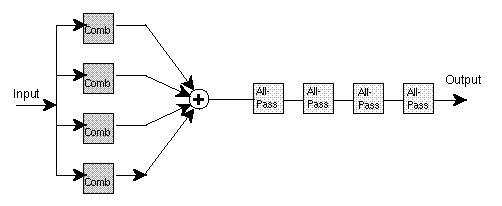
source: https://ccrma.stanford.edu/software/clm/compmus/clm-tutorials/processing2.html#rev
Convolution
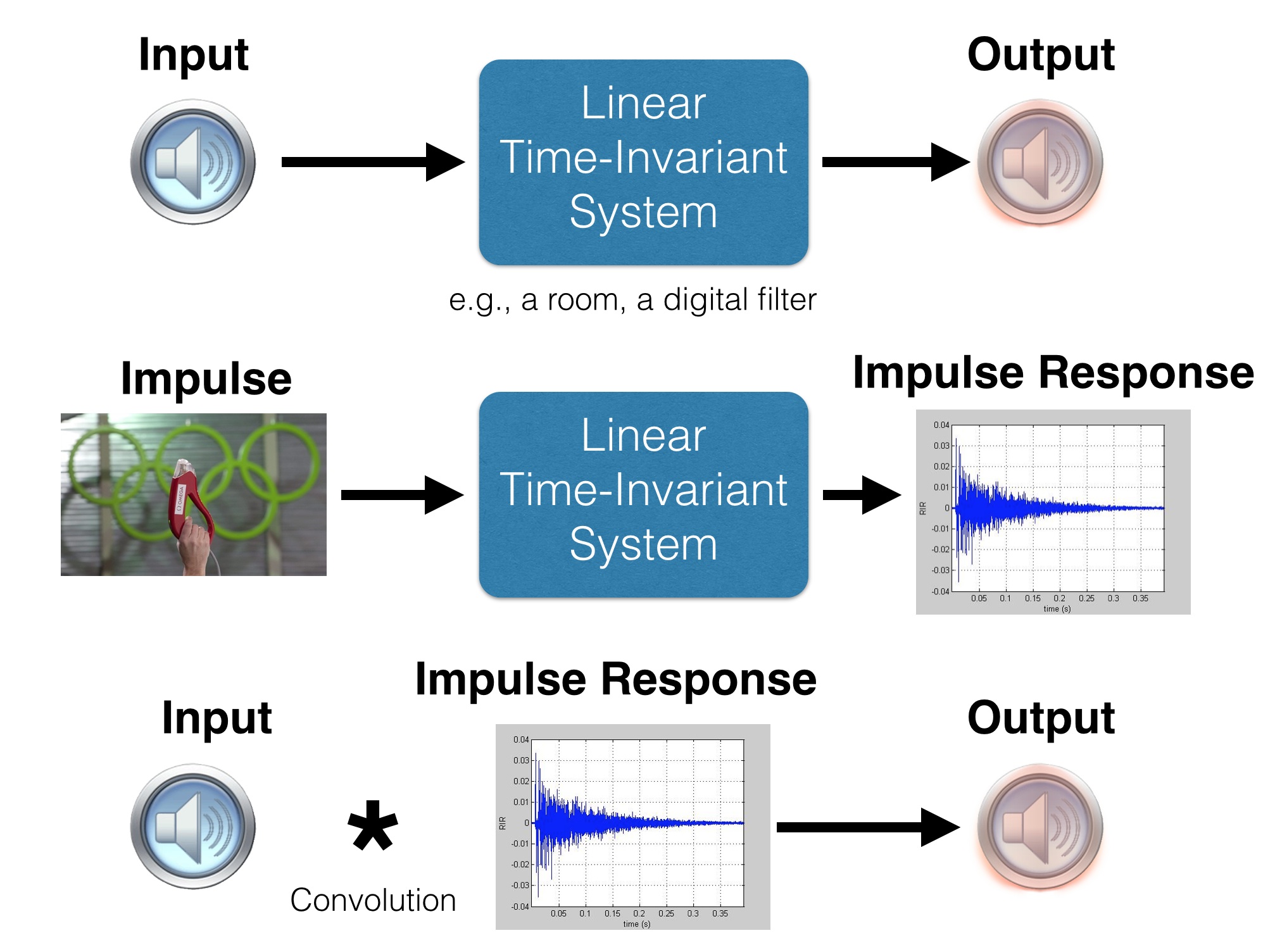
MUMT 307
Reverb
- Convolution (discrete version) (use Firefox or Safari)
- Revereb Demo
- Promotional video
- University of York: Open AIR Library
- Car engine demo
- Project idea: Create a service that will convert a recording of "sine wave sweep" to impulse response
Convolution 1
An impulse function: `delta(n)={(1, n=0), (0, otherwise):}``x(n)=sum_(k=-oo)^oox(k)delta(n-k)`
A system (a transform): `y(n)=T[x(n)]`
`y(n)=T[sum_(k=-oo)^oox(k)delta(n-k)]`
If `T` is linear:
`y(n)=sum_(k=-oo)^oox(k)T[delta(n-k)]`

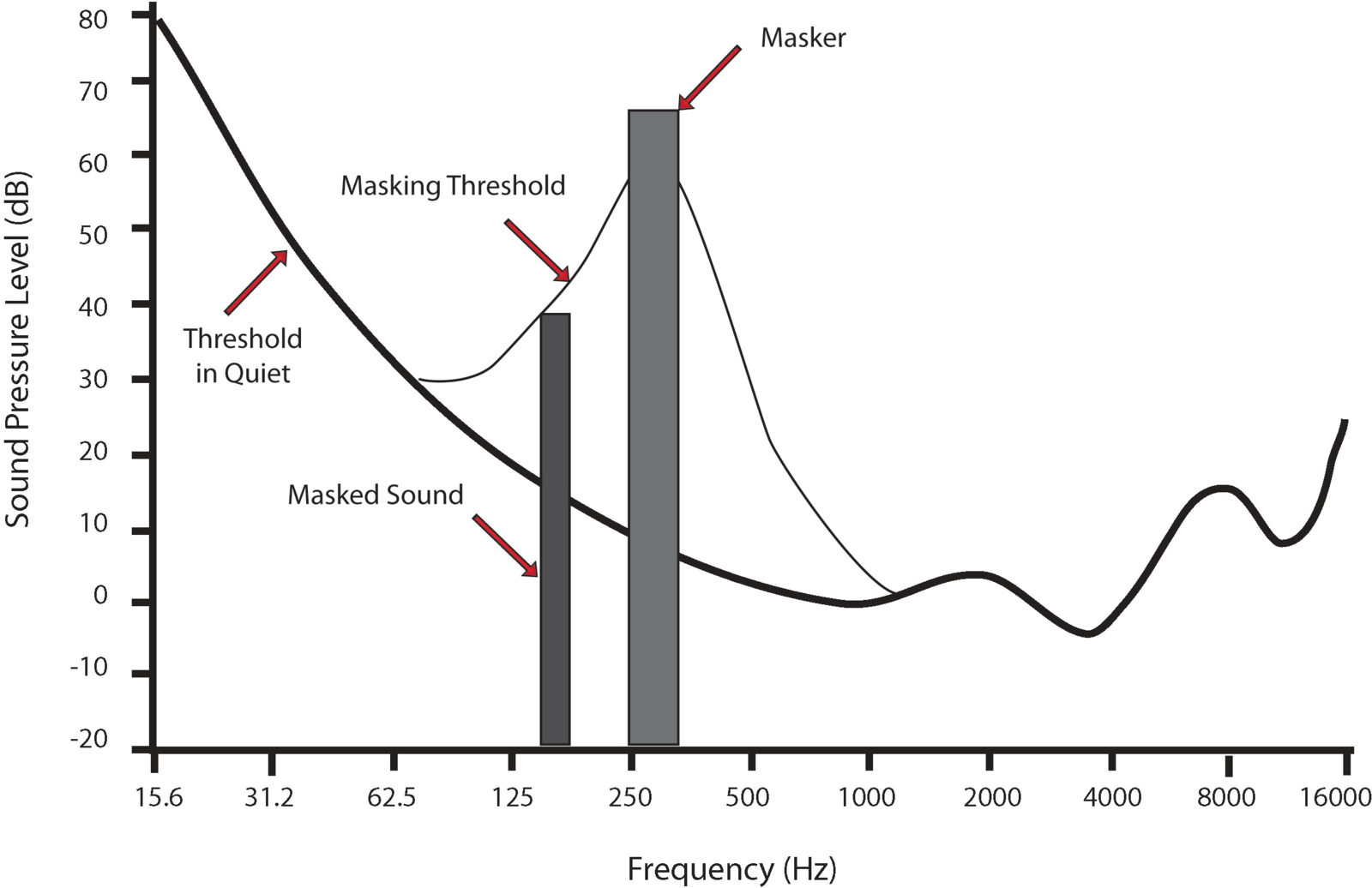
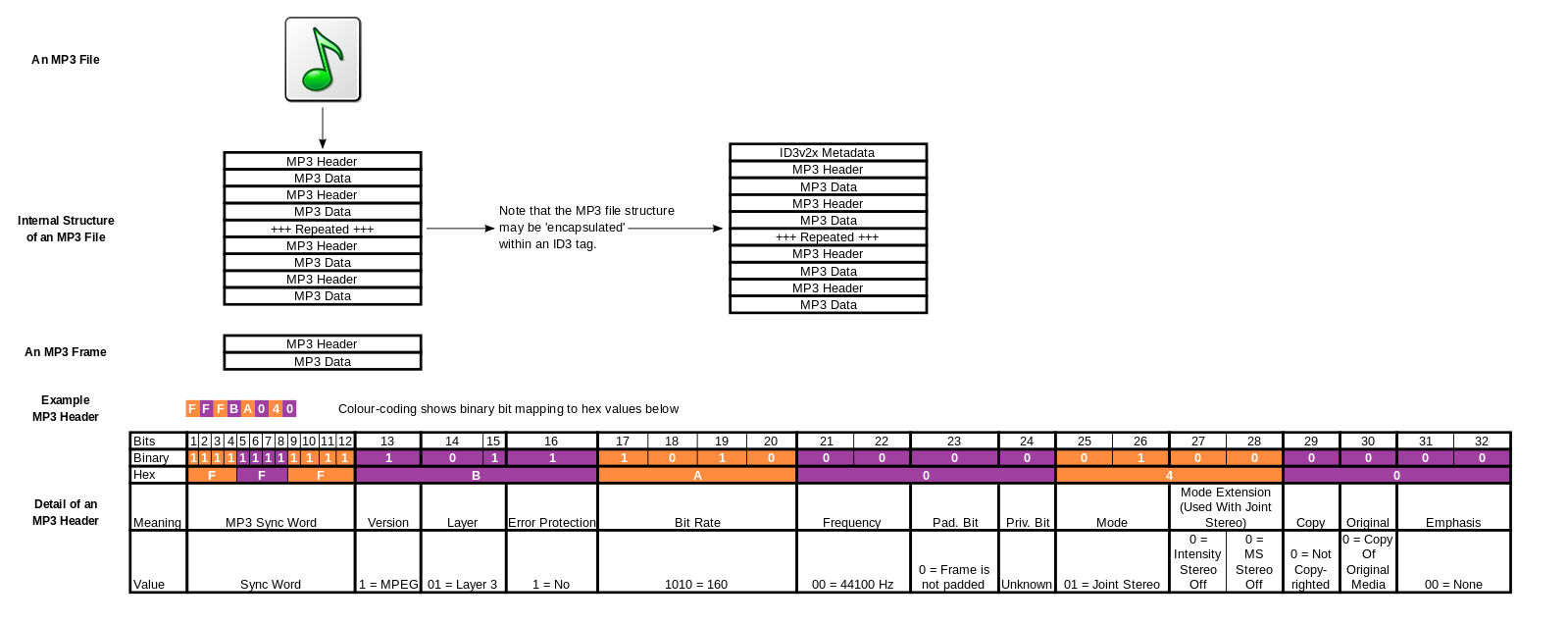
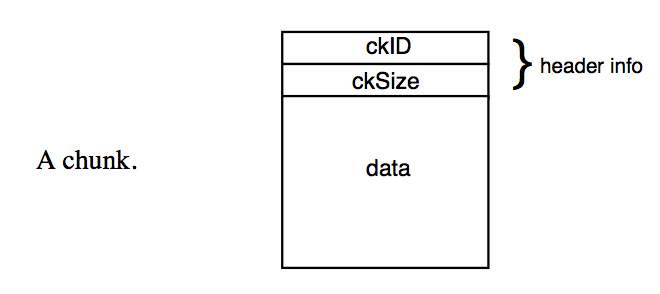
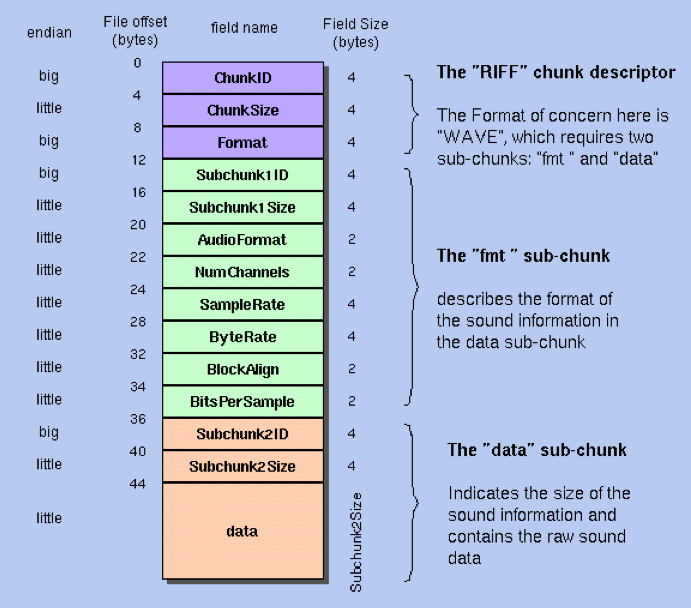
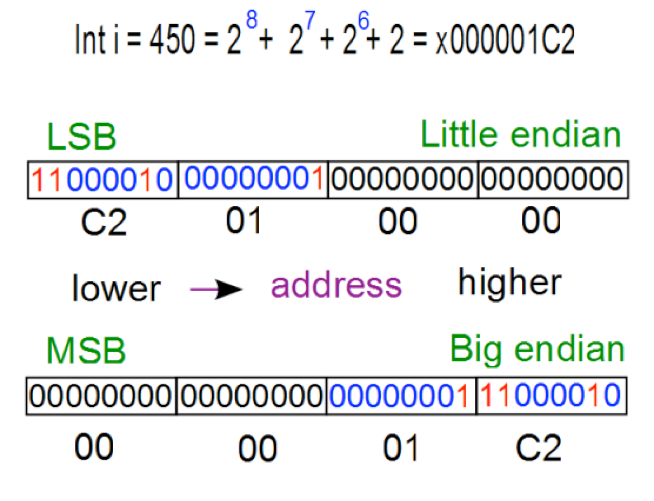
(i.e., `T[alpha f(n)+beta g(n)] = alpha T[f(n)]+beta T[g(n)]`)
`y(n)=sum_(k=-oo)^oox(k)T[delta(n-k)]`
Convolution 2
Assuming `T` is linear:`y(n)=sum_(k=-oo)^oox(k)T[delta(n-k)]`
If `T` is also time invariant:
`y(n) = T[x(n)] -> y(n-k) = T[x(n-k)]`
If `h(n)` is a response of `T` to `delta(n)` then:
`h(n) = T[delta(n)] -> h(n-k) = T[delta(n-k)]`
`y(n)=sum_(k=-oo)^oox(k)h(n-k)`
But `h(n)` is the impulse reponse of `T`
Convolution 3
This is the definition of convolution:`y(n)=sum_(k=-oo)^oox(k)h(n-k)`
Also noted as: `y(n) = x(n)` * `h(n)`
Fast Convolution
`y(n) = IFT{FT[x(n)] * FT[h(n)]}`
The convolution is the same as the inverse Fourier transoform of the multiplication of the input and the impulse response in the frequency domain!
MUMT 307
Reverb 1 (lab)
- Find and download Impulse Response files from different sites
- Try this one first: http://www.voxengo.com/impulses/
Check out the Modeler - You will be assigned one of these to download and test: http://rhythminmind.net/STN/?page_id=4188
- Here are some more:
- http://www.resoundsound.com/4-impulse-response-reverb-packs/
- Isophonics (96kHz)
- These ones are in SoundDesigner II file format: http://fokkie.home.xs4all.nl/IR.htm
MUMT 307
Reverb 2 (lab)
- Test the downloaded IR files with the Reverb demo
- Use anechoic chamber recordings from University of York
MUMT 307
Audio File Format
- List of different audio file formats
- Compressed vs Uncompressed
- Why compress?
- How much can it be compressed?
- Lossless vs Lossy
- When do you not want to compress, even lossless?
- Sound quality
- Metadata
- Open vs Proprietry technologies
- Containers
- DRM
MUMT 307
Uncompressed (lossless) audio file format
- Bit width: 16-24 bits
- Sampling rates: 44.1kHz, 48kHz, 96kHz, 192kHz
- PCM (header less): Pulse-coded Modulation
- AIFF (Audio Interchange File Format)
- WAVE & WAVE BWF
MUMT 307
Audio file size

MUMT 307
Compressed audio file format
- Lossless (typically 2:1)
- FLAC (Free Lossless Audio Codec)
- WMA Lossless
- Lossy (up to 10:1 or more)
- MP3: MPEG I/II Layer 3
- Ogg Vorbis
- WMA
- AAC
MUMT 307
Lossy Perceptual Audio Coding
- MP3 (MPEG I/II Layer III)
- Karlheinz Brandenburg
- Stereo or 5.1 channels
- Sampling frequency: 16-48kHz
- AAC (Advanced Audio Coding; 1997)
- m4a: created by iTUnes when importing from CDs
- m4p (DRM protected): when you buy a song from Apple on iTunes (as of 2009/01, iTunes offer DRM-free songs)
- Up to 48 channels
- Sampling frequency: 8–96kHz
Audio Masking

MP3 File Structure

MUMT 307
Containers
- Audio only
- AIFF (Apple 1989)
- WAV (Microsoft & IBM 1991)
- General (multimedia)
- Matroska
- Ogg
- MPEG: MP4
- AVI
- AES-31
- METS
MUMT 307
IFF File Format
- Interchange File Format: AIFF (big-endian), RIFF (little-endian), WAV (not TIFF)
- Based on "EA IFF 85"
- Based on "chunks"
- Extensible

WAV File Format

Little endian vs Big endian

MUMT 307
Lossy vs Lossless
- Q: Can people hear the difference?
- A: It depends
- Listeners can tell the difference between CD quality and MP3 compression (92–192 kb/s) [Amandine et al. 2009]
- Listeners can not tell the difference between CD quality and MP3 compression (256–320 kb/s) [Amandine et al. 2009]
- Listening test
MUMT 307
Wavetable and Additive Synthesis
- Additive Synthesis (KAWAI K5)
- Web Audio API: PeriodicWave (fromerly known as WaveTable)
- PeriodicWave demo
MUMT 307
Wavetable and Additive Synthesis (lab)
- Using the PeriodicWave demo, create a sawtooth wavetable and a triangular wavetable with the following Fourier series with the fundamental frequency `f` (lab):
Square: `4/pisum_(k=0)^oo 1/k sin(2pifkt) text{ for } k=1,3,5,...`
Sawtooth: `1/2 - 1/pisum_(k=0)^oo 1/k sin(2pifkt) text{ for } k=1,2,3,...`
Square: `8/pi^2sum_(k=0)^oo (-1)^{(k-1)//2}/k^2 sin(2pifkt) text{ for } k=1,3,5,...`